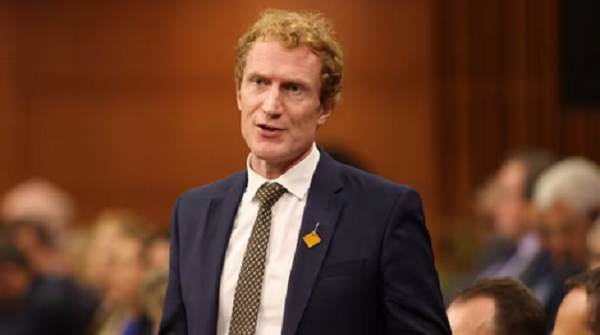Despite improvement in inflation, pervasive tipping makes Canadians feel otherwise
With Canada’s inflation rate now back below 2 per cent, the Bank of Canada has seemingly won the fight against fast-rising prices. Yet the bank’s own survey of consumer attitudes shows people believe inflation is still rampant.
One driver of that perception gap could be the onslaught of requests consumers now face for tips – both the shock of being prompted for sky-high tips at some payment terminals, and the request for tips from businesses that never expected gratuities in the past.
The surge in inflation that began in early 2022 and the expansion of tipping were each born out of the chaos wrought by the pandemic. Factory shutdowns, border closings and labour disruptions threw a wrench into supply chains, causing the price of goods and services to spiral higher.
Meanwhile, during the lockdowns consumers were encouraged to tip generously to workers as plummeting restaurant traffic cut into the livelihoods of people risking their health to serve customers. A proliferation of payment terminals at many smaller businesses and a big increase in the use of contactless payment methods during the pandemic made tipping even more prevalent.
Inflation has largely gone away. However tip-flation, powered by the twin forces of guilt and technology, is proving harder to undo.
“Tipping isn’t driving inflation rates, but it is affecting people’s perception of prices and that’s become very important as inflation has come down,” said Mike von Massow, an associate professor of food and agriculture at the University of Guelph.
Tipping is in the spotlight again after the Quebec government introduced a bill last month that would require businesses to calculate the suggested tips presented to consumers on terminals based on pre-tax prices. As it is now, the pre-set percentages on terminals apply to after-tax prices.
On their own, tips are not inflationary. If the cost of a meal went from $25 in 2019 to $31 today – which is in line with Statistics Canada’s measure of how much restaurant food has increased over that time – a 15 per cent tip applied then and now would not affect the overall rate of cost increase for the consumer.
But that’s not what has happened. The size of suggested tips that confront customers on payment terminals have in many cases increased. Where the options might have been 10, 15 or 20 per cent a few years ago, some restaurants and coffee shops hiked that to 15, 20 or 25 per cent – even as high as 30 per cent.
If someone continued to select the middle option for tips, they’d incur a 5-per-cent cost increase in their total payment, though that’s spread out over a number of years.
Meanwhile, fast-food chains, as well as non-restaurant businesses such as oil change shops and retail stores, have started to prompt customers for a gratuity at the till.
“We’ve all probably seen more and more tipping in our day-to-day lives,” said Andrew Barclay, an economist with the consumer price division at Statistics Canada. “When you go to the restaurant the tip options seem to be higher, and there are more tipping options for takeaway food or for services that didn’t use to involve tipping.”
However, Statscan does not factor in tips when it measures how prices have changed for its monthly consumer price index.
That’s because the agency does not have access to reliable, monthly data that would show if tipping rates or the prevalence of tipping are changing, he said.
Real-time data on tipping is hard to come by. David Litwin, a spokesperson for Moneris Solutions Corp., Canada’s largest payments processor, said the company could not provide data on tipping trends.
However, Square, the technology company whose payment terminals became popular with many small businesses during the pandemic, did provide some annual tipping data. The numbers show that at restaurants and coffee shops, the average tip jumped between 2019 and 2022 but has receded since.
Square transactions at coffee shops that included a tip also jumped from 50.5 per cent of all transactions in 2019 to 58.4 per cent in 2022, before declining to 54.8 per cent this year. The company did not provide average data on the prevalence of tips at restaurants because the practice varies widely depending on the type of establishment.
Based on the company’s data, Ara Kharazian, the research and data lead at Square, said in an e-mail that tipping is only modestly more common than it was before the pandemic, and tips account for a relatively small share of a consumer’s monthly spending.
“I think tipping has gotten so much attention because it’s appeared in places most consumers don’t necessarily expect,” he said. “It’s memorable and can feel jarring, but based on the data many consumers still decline to tip in those contexts.”
Vittoria Gallone, a real estate agent in Mississauga, Ont., is one of those Canadians who found herself tipping more generously during the pandemic but who has grown frustrated with Canada’s pervasive tipping culture.
“Those were hard times and I wanted to support workers, but tipping expectations just kept going up and never pulled back,” she said, adding she gets especially annoyed when prompted for a tip for takeout food before she’s even received any service.
“Even though inflation has come down, high prices are still hurting a lot of people, and then you have establishments gouging people with this sense of entitlement over tips,” she said.
She has begun to scale back her tips, and now steers clear of establishments where she feels there’s an expectation of tips while providing service that isn’t any better, or in some cases is worse, than it was before.
In that way, Mr. von Massow said restaurants that leave customers feeling resentful over tips are hurting themselves in the long run. While higher menu prices are a big reason for a drop in guest counts across the industry, “some people are responding to all these requests for extra money by not going out.”
That could eventually help bring tipping expectations back in line with where they were before the pandemic, something consumers can promote by refusing to be pressured into tipping, he said.
“People need to remember this is a social norm, there are no hard-and-fast rules that force you to tip,” he said. “Consumers should feel good about what they’re doing and not feel guilted into doing it.”
This article was first reported by The Globe and Mail













